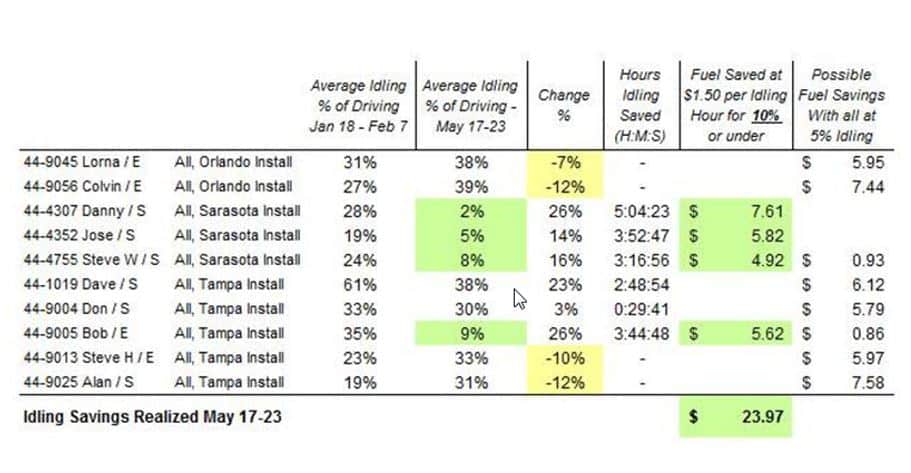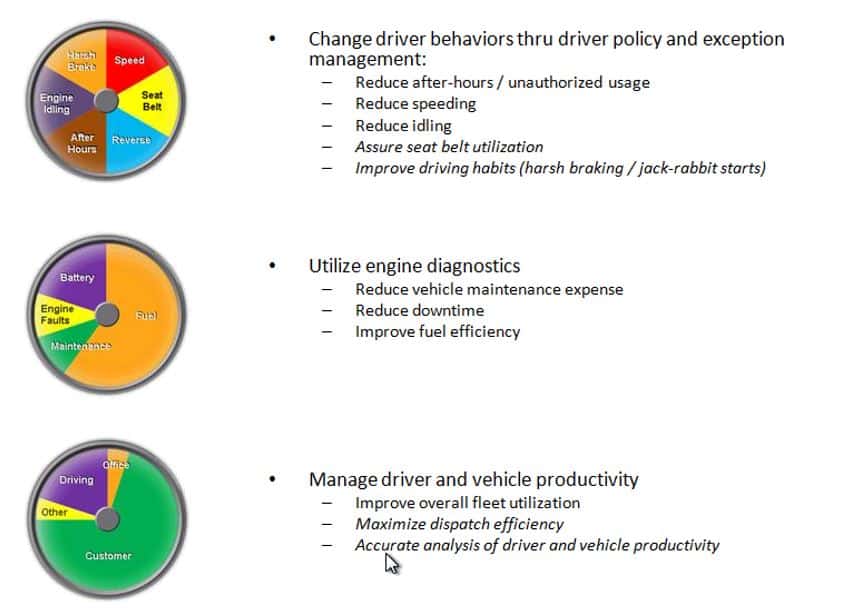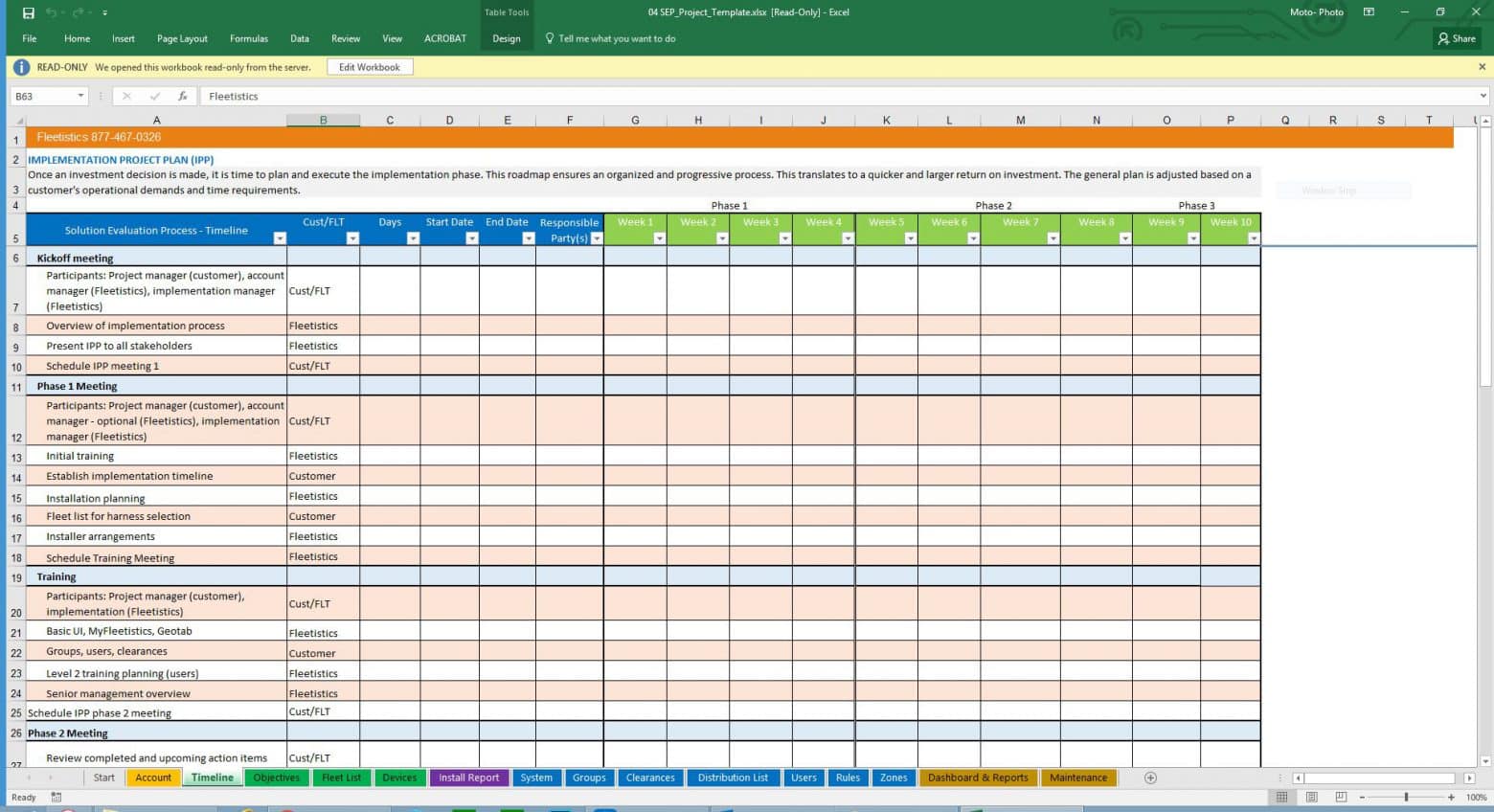Telematics Solution Evaluation Process
Try Before You BuyTelematics Solution Evaluation Quantifies Your ROI
Fleetistics Telematics Solution Evaluation Process (SEP) was developed to mitigate the risk for fleet managers when vetting various technology solutions. We have learned much from working with fleets for over 20 years. Large fleet managers have unique challenges that have the potential for a significant positive or negative impact on a company’s profitability. Choosing the wrong telematics solution can be a risky proposition.
Pilot vs. SEP
In general, a pilot is a short-term confirmation of what has been presented to small fleets or fleets with fewer needs. A SEP is for large fleets with complex needs today or in the future.
The SEPs 60-day process ensures total clarity on everything from installation, to configuration, to training and support. By the end of the SEP process customers know what issues can be resolved and the potential ROI when applied at fleet wide. This process is the only way to ensure a good decision is made. Don’t worry, a business analyst with over 20 years of experience and a highly trained sales team will take you through the process.
Understanding the Value
Fleetistics deploys fleet tracking and management solutions across many industries. In vehicle tracking industry, the terms pilot or trial are thrown as part of the sales process and represent a general feature review of a GPS tracker. While Fleetistics feels that it is important to experience a real-world test in your environment, it is more important to be armed with the tools and the expertise to understand the data and how it can be used to change a customer’s processes to drive ROI. The goal is to significantly increase the probability of success of the GPS and telematics program.

Solution Evaluation Process (SEP)
To accomplish this thorough evaluation process, Fleetistics developed the SEP. During a SEP we consult with customers in order to thoroughly understand defined issues and identify ROI opportunities. Fleetistics considers a wide variety of technology, including 3rd party partners, to deploy a variety of technologies and services to solve customer issues. This process require interaction and commitment above that required for a simple pilot.
During this SEP future customers are assigned a business analyst to guide and lead the process, work with the customer at all levels and train personnel. Together we define specific goals to achieve the
By working as a team (management, employees
Measure. Lead. Succeed.
Why go through a SEP?
SEPs are designed and available to enterprise-class fleets ranging from 100 to 10,000+ vehicles, This process is the most thorough and complete evaluation process in the industry. It is intended to provide full disclosure as to the value of the data, value-added services such as training, customization of the system, and the opportunity for integration. The process involves a significant amount of consulting, knowledge transfer, and training and is as significant of investment for Fleetistics as the customer.
Customers that complete the SEP process are about 80% trained and have the knowledge to change their organization in significant ways using the fleet management data. Because of the commitment by both parties, an NDA and special agreement are required and investment will be made at the end of the process should the solution meet the customer’s needs. The investment, deliverables, and other factors are negotiated prior to the SEP so the natural conclusion to the SEP becomes deployment if the goals are met.
Generally, enterprise-class fleets preparing to make a major investment appreciate the SEP process and are willing to commit the time and resources needed to avoid costly mistakes.
Customer Commitment
The SEP takes about 75 days from installation to final evaluation and requires, in some cases, a limited financial investment; all require time and man-hours. A timeline is outlined prior to starting by the business analyst and agreed to by the customer. Regular meetings are required to review the project progress and access to vehicles and field personnel is required to study operations, processes and implement change after the 30 day mark. Customers must be willing to commit the time and upper management must be informed of progress on an ongoing basis.
Sample SEP Timeline
Electric Vehicles
As more and more government agencies and enterprise-class organizations look at electric vehicles (EV), the need grows to understand when EV is practical, cost-effective, and what infrastructure is needed to support an EV fleet. Fleetistics’ technology offers EV tracking with the same device used for OBD and J-Bus protocols. One smart GPS device across multiple protocols, OEMs, and vehicles enable customers to have a unified interface for many fleet needs. A team of EV specialists is available to assist large fleet organizations in understanding EV and how it plays a role in the future.




